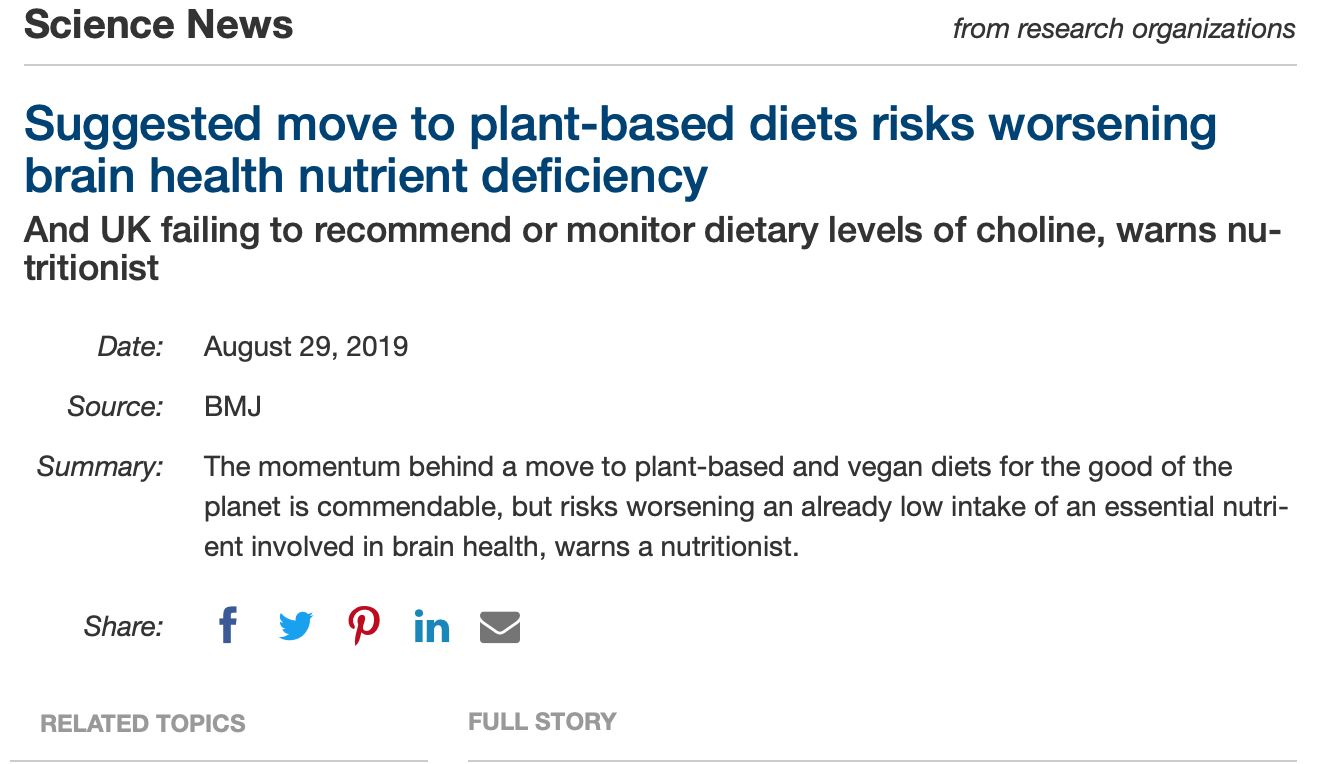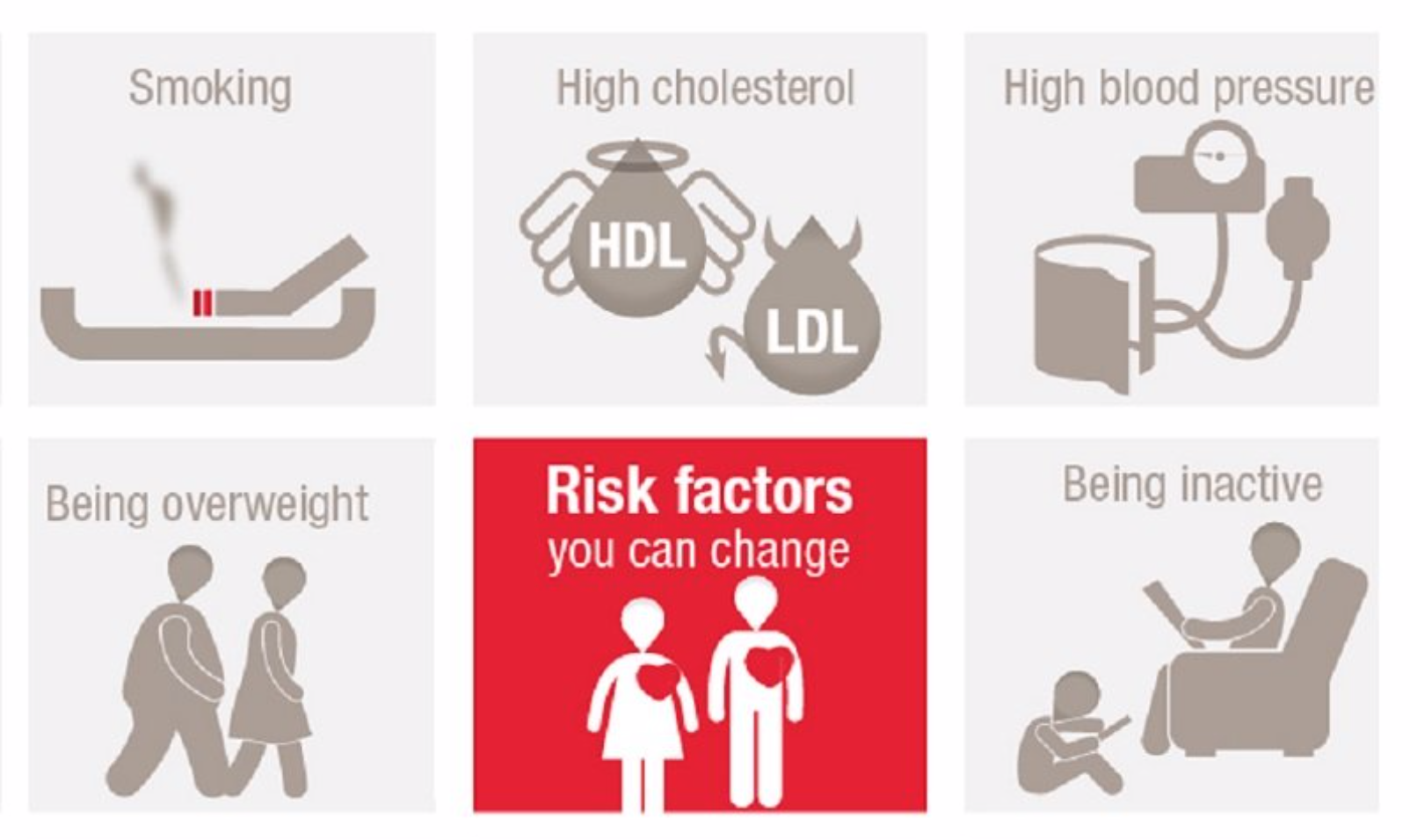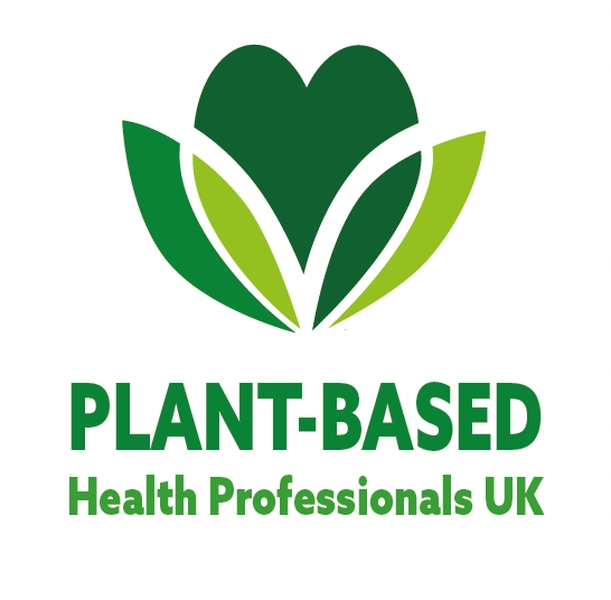A review of the weeks plant-based nutrition news 22nd Sept 2019

Another media story caused a storm and worry amongst those parents raising vegan children. The story relates to new guidelines published by Healthy Eating Research, a national program of the Robert Wood Johnson Foundation in the U.S. These guidelines have been endorsed by four major health organisations in the U.S. — Academy of Nutrition and Dietetics, American Academy of Pediatric Dentists, American Academy of Pediatrics, American Heart Association. The guideline covers all drinks, not just cow’s dairy and plant-milks, and thus makes several sensible recommendations. For example, they recommend avoiding flavoured milks, sugar-sweetened and artificially-sweetened beverages in children. Also, to avoid fruit juice in very young children and limiting in older children.
However, in my view the recommendation for the avoidance of plant-based milks is rather controversial and not evidence based. Needless to say, when you read the actual document, it is acknowledged that soya milks are a recognised, suitable alternative to cow’s milk. To suggest however that cow’s dairy is an essential drink for all or most children is just not factually correct for the following reasons:
- There is no biological or physiological reason why humans require milk from another species after weaning. There are no non-human animals that drink milk beyond weaning, not even our closest relatives. Humans have evolved to drink milk after we started domesticating animals.
- The enzyme lactase is needed to break down the milk sugar lactose. Lactase persistence, the ability for adults to digest the lactose in milk, represents an adaptation to the domestication of dairy animals and the subsequent consumption of their milk. A large study published in 2017 shows that the global prevalence of lactose intolerance due to lack of lactase activity is 68% with a range of 4–100% depending on country of origin. Europeans have a lower prevalence of lactose intolerance but in the Middle East and in Sub-Saharan Africa, the prevalence can be up to 100%. In those with lactose intolerance, the consumption of dairy from any animal will lead to unpleasant gastrointestinal symptoms and other systemic symptoms, such as headaches.
- There is no evidence that I can find to suggest that those who cannot consume cow’s milk due to lactose intolerance or cow’s milk allergy have adverse health outcomes. The most consistent findings appears to be lower levels of vitamin D in those that avoid cow’s milk consumption. However, cow’s make vitamin D in the same way as humans — from exposure to the sunshine. As you can imagine, most factory farmed dairy cow’s do not get adequate exposure to the sun and therefore their feed is fortified or the cow’s milk is fortified with vitamin D. Thus human children can also obtained vitamin D through fortified plant milks, foods and supplements rather than indirectly through cow’s milk.
- Although cow’s milk is a good source of calcium and it is assumed that this calcium consumption will lead to better bone health, this is not borne out in the literature and the data remain inconsistent. A systematic review on calcium intake and risk of fracture concluded; ‘ Dietary calcium intake is not associated with risk of fracture, and there is no clinical trial evidence that increasing calcium intake from dietary sources prevents fractures. Evidence that calcium supplements prevent fractures is weak and inconsistent’. A large study of 96,000 men and women followed for 22 years found that greater milk consumption during teenage years was not associated with a lower risk of hip fracture in older adults. In fact there are some studies that show negative health outcomes in those that consume the most dairy. In a large population study from Sweden that compared cancer risk in those with lactose intolerance to their relatives who were not lactose intolerance and hence consumed cow’s dairy, those avoiding dairy consumption had a significantly lower incidence of lung, breast and ovarian cancer. Another study from Sweden showed that those men and women with the highest dairy consumption had an increased risk of death. Now, it is not true to say that every study has shown negative effects of dairy consumption on health outcomes, only that the evidence is mixed and there is no data to suggest that avoiding dairy if consuming a well balanced, nutritionally complete diet is detrimental to health.
- The report does state that soya milk would be the exception to their recommendation and that soya milk can be a suitable alternative to cow’s dairy in those that have cow’s milk allergy or lactose intolerance. However, this recommendation is unnecessarily guarded. Soya infant formulas containing soya flour have been used for over 100 years. A systematic review and meta-analysis of the safety of soya-based infant formula in children found that they are safe and concluded ‘The patterns of growth, bone health and metabolic, reproductive, endocrine, immune and neurological functions are similar to those observed in children fed cow’s milk formula or human milk’. Of course it is recommended that children up to 6 months should be exclusively breast-fed and up to 1 year of age the main source of calories and nutrients should still be from breast milk, with breast feeding continuing till age 2. However, if a vegan formula is required then soya formula is the best option and is safe.
- Concerns are raised in the report that plant-based milks do not contain the same nutrient profile as cow’s milk, particularly in terms of protein, calcium and vitamin D. However, it again does state that soya milk is the best option. In fact, fortified soya milk has a very similar nutrient profile to cow’s milk as shown in the table below taken from the report. In addition, soya milk contains fibre, which is absent from cow’s milk, and does not contain cholesterol, a definite advantage. Looking at the table, pea milk is also looking like a good source of protein and nutrients, but is not widely available. The report raises concerns about the bioavailability of the nutrients in soya milk — that is how well they are absorbed by the body. However, they do not cite any relevant papers to support this statement.

7) In a short video from PCRM, Dr Neal Barnard explains the conflict of interests and that those organisations endorsing the guidelines are receiving funding from the dairy industry. The American Academy of Paediatrics have also recently come under attack for supporting the continued availability of chocolate flavoured milk in U.S. public schools, suggesting this may be a consequence of their ties to the dairy industry. PCRM have demanded that the American Heart Association withdraw their support from these healthy drinking guidelines.
8) The guidance fails to discuss the associations between dairy consumption and illnesses such as eczema, asthma and acne. There diseases are on the rise in Western societies. Even though the causes are multi-factorial, dietary factors are heavily implicated.

Choline and health outcomes. I am returning briefly to the story that hit the media headlines at the end of August. It suggested that those following plant-based diets are at risk of choline deficiency. This was based on an opinion article by Emma Derbyshire, member of the meat advisory panel, written in BMJ nutrition (note that after publication she added her meat industry affiliation when we and others wrote to the BMJ in protest). High levels of choline are found in meat and eggs but many plant foods also contain choline, mostly at lower levels. But what do we actually know about choline consumption and health. The data at present is quite mixed with studies showing both positive and negative associations with health outcomes. A recent study published online provides population data from the National Health and Nutrition Examination in the US (20,325 participants) plus a systematic review and meta-analysis of prospective data on choline consumption and mortality (149,491 participants). The data show that higher consumption of choline was associated with a higher risk of all cause, cardiovascular and stroke mortality. Higher consumption also resulted in a worse lipid profile and glucose regulation and increased the risk of type 2 diabetes. Why might this be? Choline from meat sources is converted in the gut to TMA and then in the liver to TMAO, which is implicated in the pathogenesis of atherosclerosis, heart failure, type 2 diabetes and renal failure. High choline can reduce levels of homocysteine, another risk factor for cardiovascular disease. The associated worse lipid profile could also be contributory. So, there is no actual evidence that high consumption of choline from meat and eggs is beneficial and the opposite may be true.

Dietary patterns and cardiovascular outcomes. The Diabetes and Nutrition Study Group (DNSG) of the European Association for the Study of Diabetes (EASD) conducted a review of existing systematic reviews and meta-analyses to explain the relationship between different dietary patterns and cardiometabolic outcomes. The paper summarizes the evidence for the Mediterranean, Dietary Approaches to Stop Hypertension (DASH), Portfolio, Nordic, liquid meal replacement and vegetarian dietary patterns. All these diet pattern have common foods groups and are high in fruits, vegetables, whole grains and legumes. The DASH diet includes low fat dairy and lean meats, The Mediterranean diet emphasises olive oil, fish and red wine, the Portfolio diet is a plant-based diet that emphasise 4 cholesterol-lowering food groups. The vegetarian diet pattern includes lacto-ovo and vegan diets that exclude all meat and the Nordic diet pattern emphasises whole plant foods but includes lean meats and seafood and the use of canola oil as a source of unsaturated fat.
All the diet patterns reviewed showed benefit for cardiometabolic risk factors and outcomes. The Mediterranean diet significantly reduced the incidence of cardiovascular disease (CVD) by 38% with a non-significant reduction in CVD mortality of 33%. The DASH dietary pattern improved cardiometabolic risk factors (P < 0.05) and was associated with a significantly decreased incidence of CVD (20%). Vegetarian dietary patterns were associated with improved cardiometabolic risk factors (P < 0.05) and significantly reduced incidence (28%) and mortality (22%) of coronary heart disease. The Portfolio dietary pattern improved cardiometabolic risk factors and reduced estimated 10-year coronary heart disease (CHD) risk by 13%. The Nordic dietary pattern was correlated with decreased CVD and stroke incidence but data are not strong given the smaller numbers of studies.
Thus vegetarian and vegan diets have the potential to improve cardiovascular outcomes in people with and without diabetes if they emphasise vegetables, fruits, whole grains and legumes. These benefits are thought to be due to the low consumption of saturated fat and the higher consumption of fibre, anti-oxidants, plant protein (as compared to animal-derived protein) and phytochemicals. In addition, all the diet patterns examined include the four individual food components that are specifically emphasized under the Portfolio dietary pattern: plant/sterols/stanols, viscous fibers, plant protein, and nuts. The benefits may therefore derive from the fact that plant sterols/stanols inhibit the absorption of cholesterol in the small intestine. Viscous fibre increases the rate of bile acid excretion and the production of short-chain fatty acids in the colon, and may reduce LDL cholesterol levels by affecting cholesterol synthesis. Plant protein may act as a vehicle for the plant sterols/stanols and viscous fiber, or other antiatherogenic agents and certain amino acids common in plant proteins may decrease cholesterol levels. The effects of nuts such as almonds, likely stem from the nutrients they provide since they contain phytosterols, fibre, and plant proteins.

Mushroom consumption and health outcomes. This may be disappointing to those of you mushroom lovers. The results of the largest prospective study to date on mushroom consumption and health outcomes does not find a benefit for mushroom consumption. A total follow-up of >100,000 health professionals from 1986 until 2012 found no effect on cardiovascular disease (CVD), stroke, or diabetes risk when comparing mushroom intake ≥5 times/wk with intake of <1 time/mo. In addition, no effects of mushroom intake were observed in a subset of ∼15,000 men and women on biomarkers of health, including blood lipids, C-peptide, and several markers related to inflammation. Of course these results may still be false-negative given the inherent issues associated with observational studies and the effects of residual confounding. Thus if mushrooms are eaten as part of a typical English breakfast with bacon and sausages then a health benefit will not be seen. In contrast if mushrooms are eaten as part of a healthy plant-based diet then benefits are more likely to be apparent. The paper does not elaborate on any associations of mushrooms with other foods. All this being said, mushrooms are a nutritious and healthy plant food forming an important food within a plant-based diet. Mushrooms form part of the daily foods recommended by Dr Joel Fuhrman, a pioneer of ‘food as medicine’ , who coined the G-BOMBS acronym for foods that should be eaten on a daily basis. Mushrooms are packed with nutritional value. They are low in calories, are great sources of fibre and protein. They also provide many important nutrients, including B vitamins, selenium, potassium, copper, and (particularly when exposed to the sun) vitamin D. So, despite the results of this study, mushrooms should remain part of a healthy plant-based diet.
If you have found this useful please follow my organisation ‘plant-based health professionals UK’ on Instagram @plantbasedhealthprofessionals and facebook
